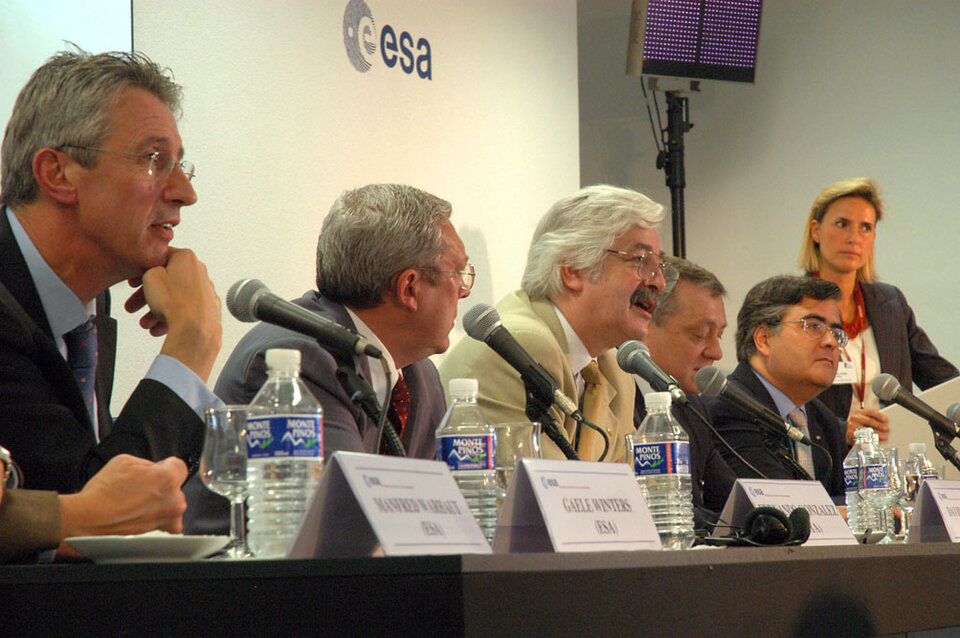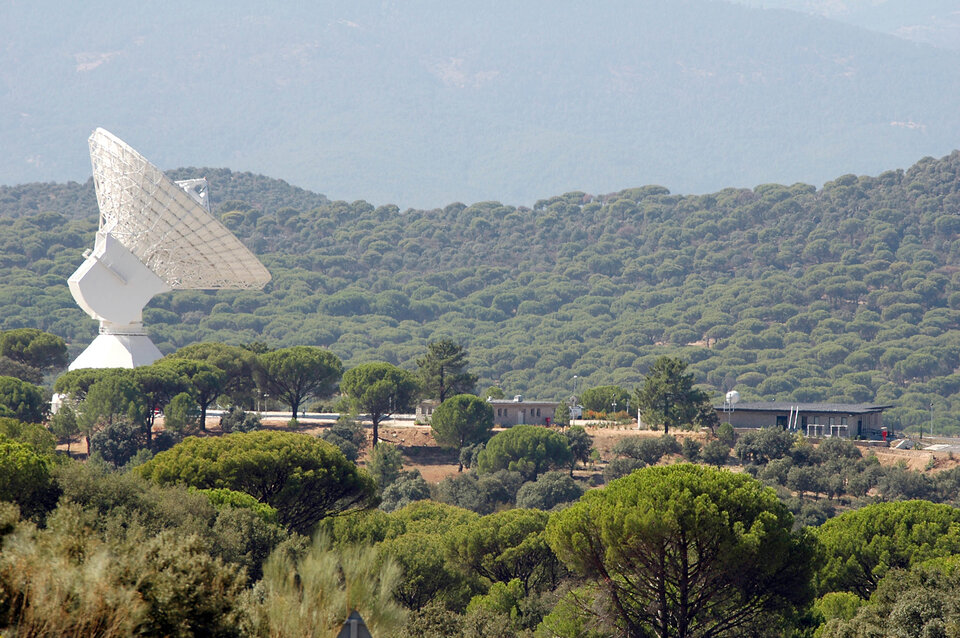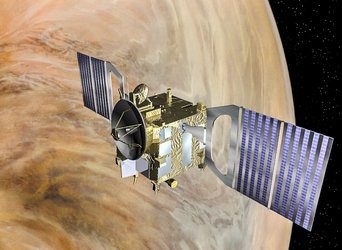Cebreros inaugurated, ready for Venus Express
ESA's new tracking station in Cebreros, Spain, was officially inaugurated on 28 September. The 35-metre deep space antenna joins the ESTRACK ground station network just in time to support next month's launch of Venus Express.
The Cebreros deep space antenna, DSA 2, joins DSA 1 in New Norcia, Ausstralia, as ESA's second station intended for communication with far distant planetary missions, starting with Venus Express and later to include missions to Mercury and other destinations in the Solar System.

The ceremony took place under a blue, cloud-free sky, emphasising the choice of Cebreros's rural location, intended to minimise interference from commercial and population centres.
The launch event was attended by ESA Director of Science, David Southwood, the Director of Operations and Infrastructure, Gaele Winters, and the Director of the European Centre for Space Astronomy (ESAC), Vicente Gómez.
Fernando González, Director General of Spain's National Institute of Aerospace Technology, attended on behalf of the Spanish government.

"Deep space antennas symbolise mankind's interest in space exploration," said Professor Southwood, speaking at the ceremony.
Hundred-million-kilometre data stream
Future deep space missions are expected to transmit large amounts of data from hundreds of millions of kilometres and require higher frequencies to boost data return.
Featuring state-of-the-art technology, Cebreros will be capable of supporting Herschel Planck, LISA Pathfinder, Gaia and BepiColombo, among others, all scheduled for launch in the next decade.

With an antenna height of 40 metres and a total weight of 620 tonnes, Cebreros appears similar to DSA 1, opened in New Norcia in 2002.
However, the station incorporates Ka-band (31.8 - 32.3 Gigahertz) receiving capability, significantly enhancing data reception, as well as improved pointing accuracy.
The antenna can also be rotated further and faster than DSA 1.
Strong ESA member state industrial cooperation
The antenna and related site facilities were completed earlier this year by an industrial group led by SED Systems, Canada; the antenna was built by Germany's Vertex Antennentechnik.
Spanish firms Esteyco and Necso built the antenna tower infrastructure, and LV Salamanca was responsible for refurbishing the site buildings, which had previously been used by NASA — also as a tracking station — in the 1960s and 70s. The grouping included additional companies from Germany, France, Spain and Switzerland.
A third deep space antenna is planned for construction at an American longitude, some 120 degrees between Cebreros and New Norcia, later this decade, providing full, 360 degree coverage as the Earth rotates.
ESTRACK automates routine tracking
ESA's ESTRACK ground station network comprises 8 ground tracking stations in Europe, Africa, South America and Australia linking satellites with a central control facility at ESA's Space Operations Centre (ESOC) in Germany.
Stations are automated for routine operations, providing significant personnel savings.




